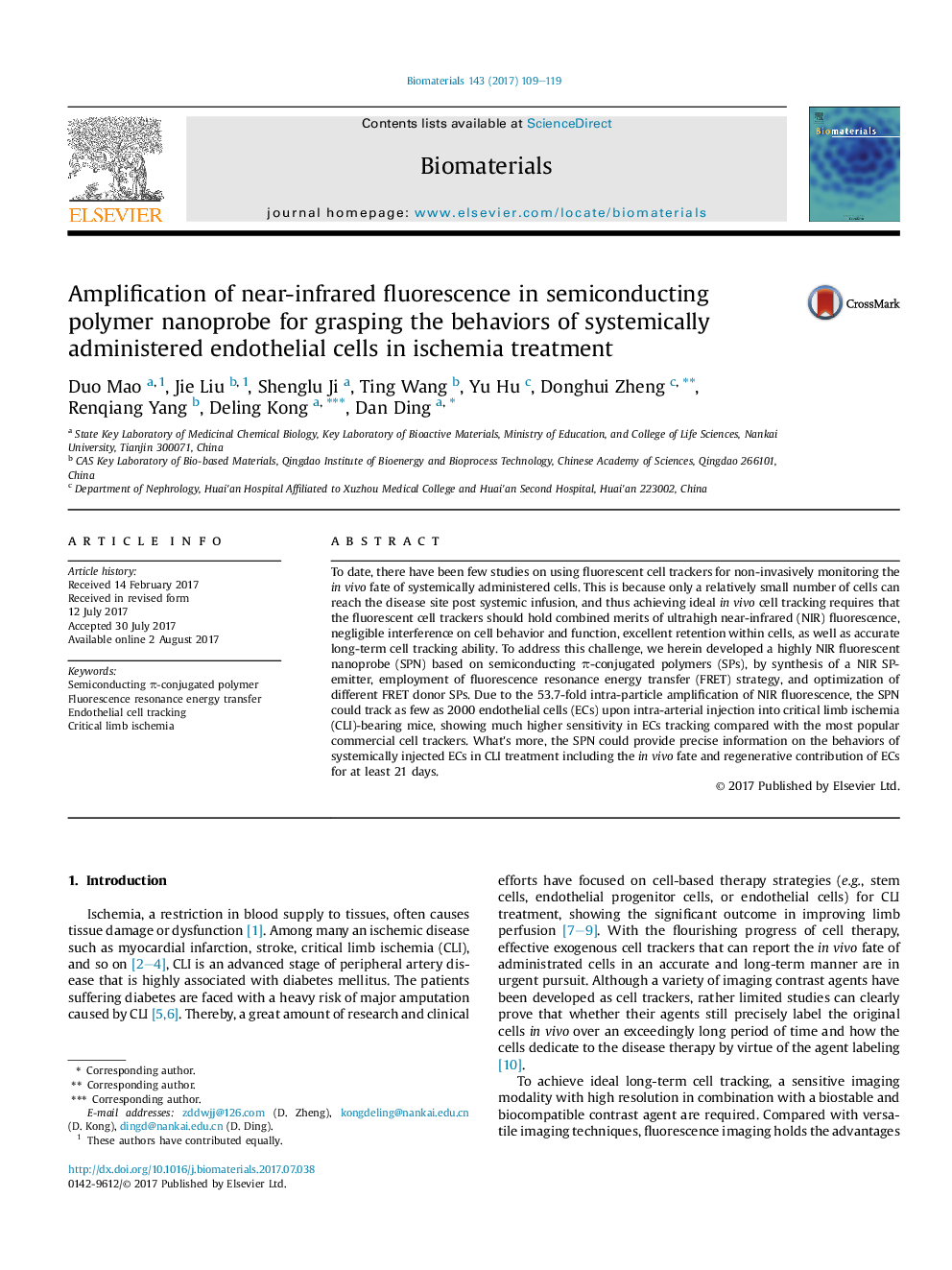| Article ID | Journal | Published Year | Pages | File Type |
|---|---|---|---|---|
| 4752314 | Biomaterials | 2017 | 11 Pages |
To date, there have been few studies on using fluorescent cell trackers for non-invasively monitoring the in vivo fate of systemically administered cells. This is because only a relatively small number of cells can reach the disease site post systemic infusion, and thus achieving ideal in vivo cell tracking requires that the fluorescent cell trackers should hold combined merits of ultrahigh near-infrared (NIR) fluorescence, negligible interference on cell behavior and function, excellent retention within cells, as well as accurate long-term cell tracking ability. To address this challenge, we herein developed a highly NIR fluorescent nanoprobe (SPN) based on semiconducting Ï-conjugated polymers (SPs), by synthesis of a NIR SP-emitter, employment of fluorescence resonance energy transfer (FRET) strategy, and optimization of different FRET donor SPs. Due to the 53.7-fold intra-particle amplification of NIR fluorescence, the SPN could track as few as 2000 endothelial cells (ECs) upon intra-arterial injection into critical limb ischemia (CLI)-bearing mice, showing much higher sensitivity in ECs tracking compared with the most popular commercial cell trackers. What's more, the SPN could provide precise information on the behaviors of systemically injected ECs in CLI treatment including the in vivo fate and regenerative contribution of ECs for at least 21 days.
